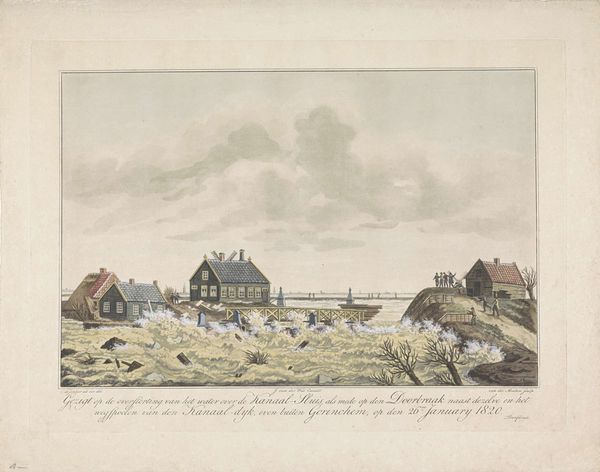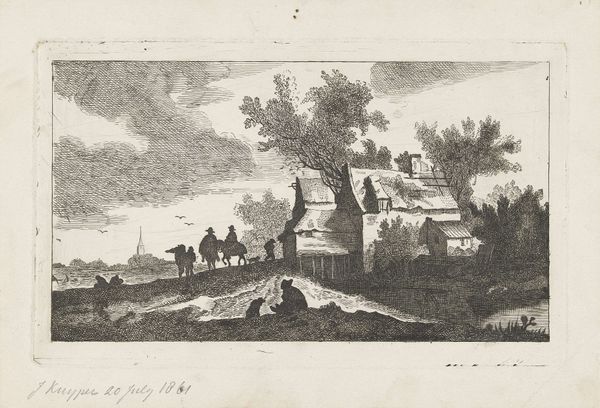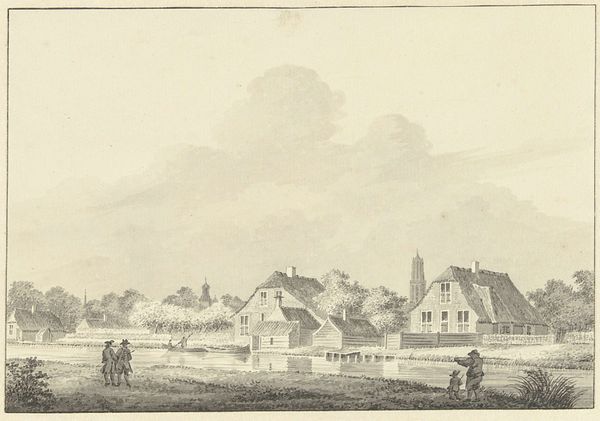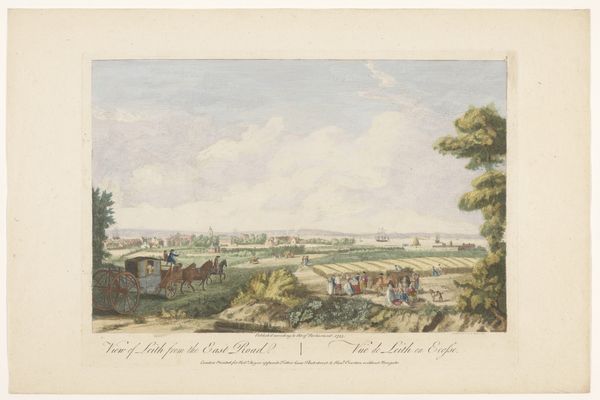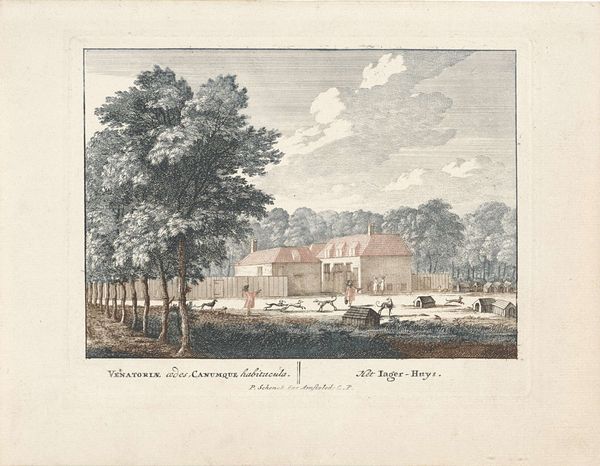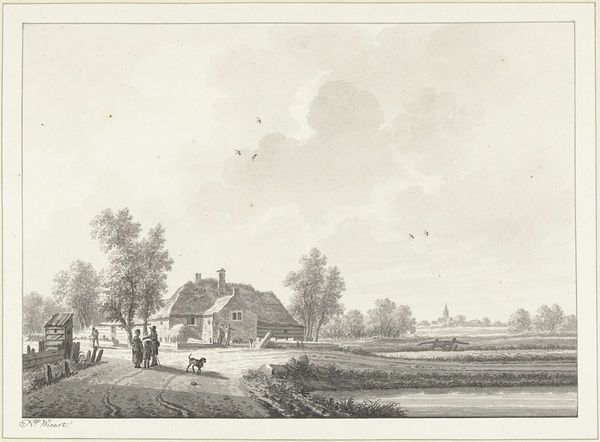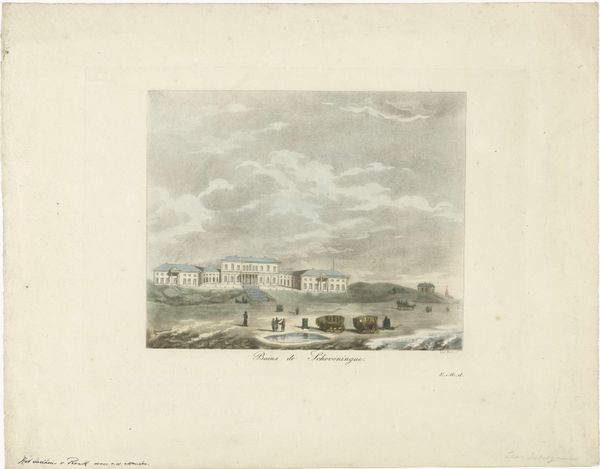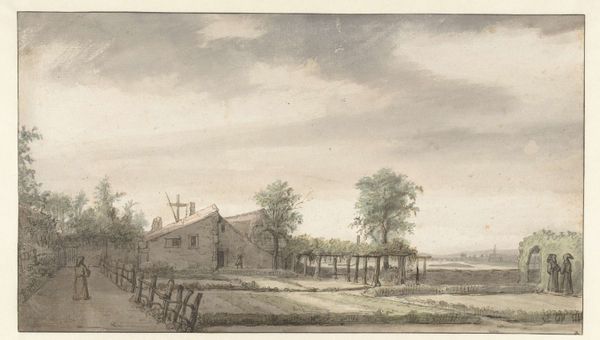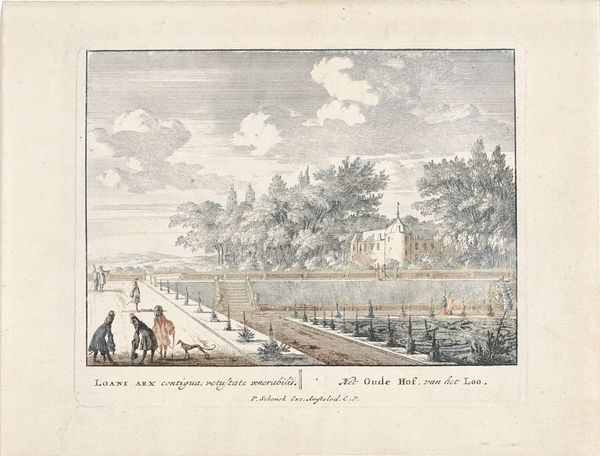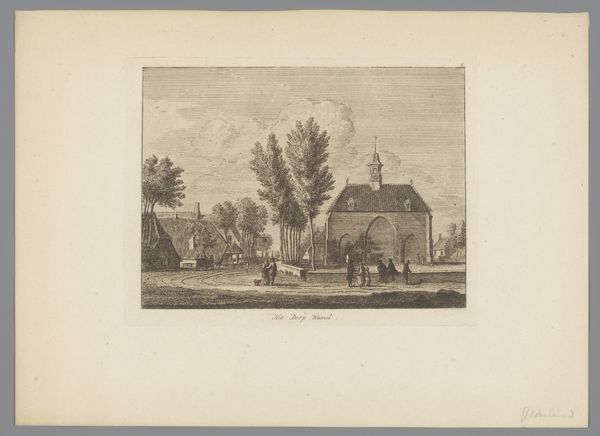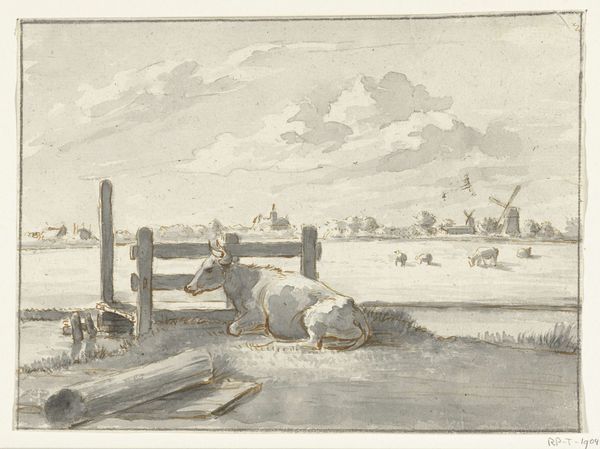
Dijkdoorbraak bij de Sprokkelburgse sluis bij Gorinchem, 1820 1820
0:00
0:00
print, watercolor
#
aged paper
# print
#
old engraving style
#
landscape
#
watercolor
#
romanticism
#
watercolor
Dimensions: height 318 mm, width 440 mm
Copyright: Rijks Museum: Open Domain
Roelof van der Meulen made this print in 1820, using etching and watercolor on paper. It depicts a dike breach at the Sprokkelburgse Sluis near Gorinchem, in the Netherlands. The controlled lines of the etching define the architectural details and figures, while the watercolor wash brings a sense of immediacy and chaos to the floodwaters. Paper, as a material, can easily be torn and is fragile. Here, it gives an interesting counterpoint to the destructive power of nature being depicted. Note the contrast between the orderly lines of the built environment and the fluid, unpredictable nature of water. Prints like this one were relatively inexpensive and easily produced, making them accessible to a broad audience, thereby democratizing art and information. Van der Meulen was documenting a real event, capturing a moment of crisis that would have had a significant impact on the local community and its surrounding environment. Paying attention to the materials and the means of production helps us to appreciate the social and historical context of this image. It provides insight into the relationship between humans, nature, and the built environment.
Comments
No comments
Be the first to comment and join the conversation on the ultimate creative platform.
